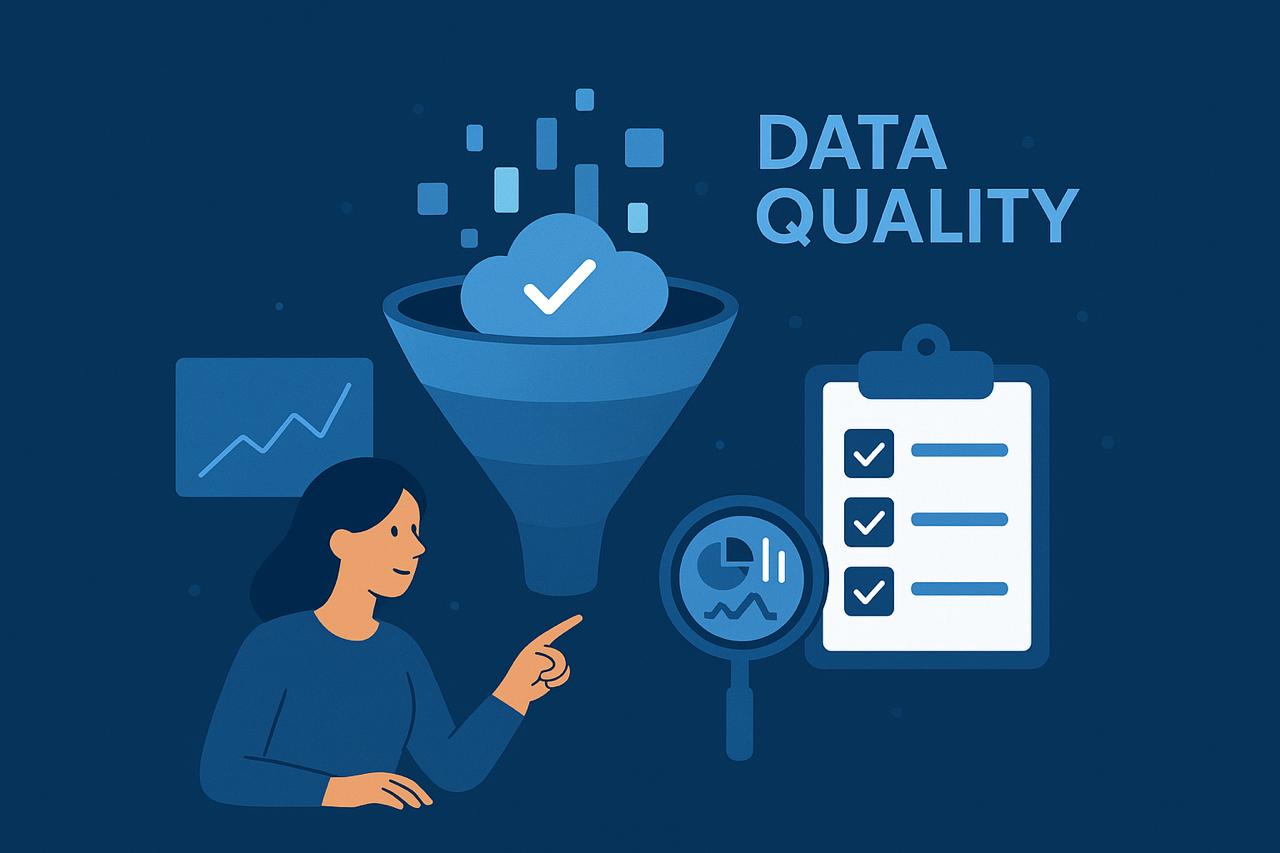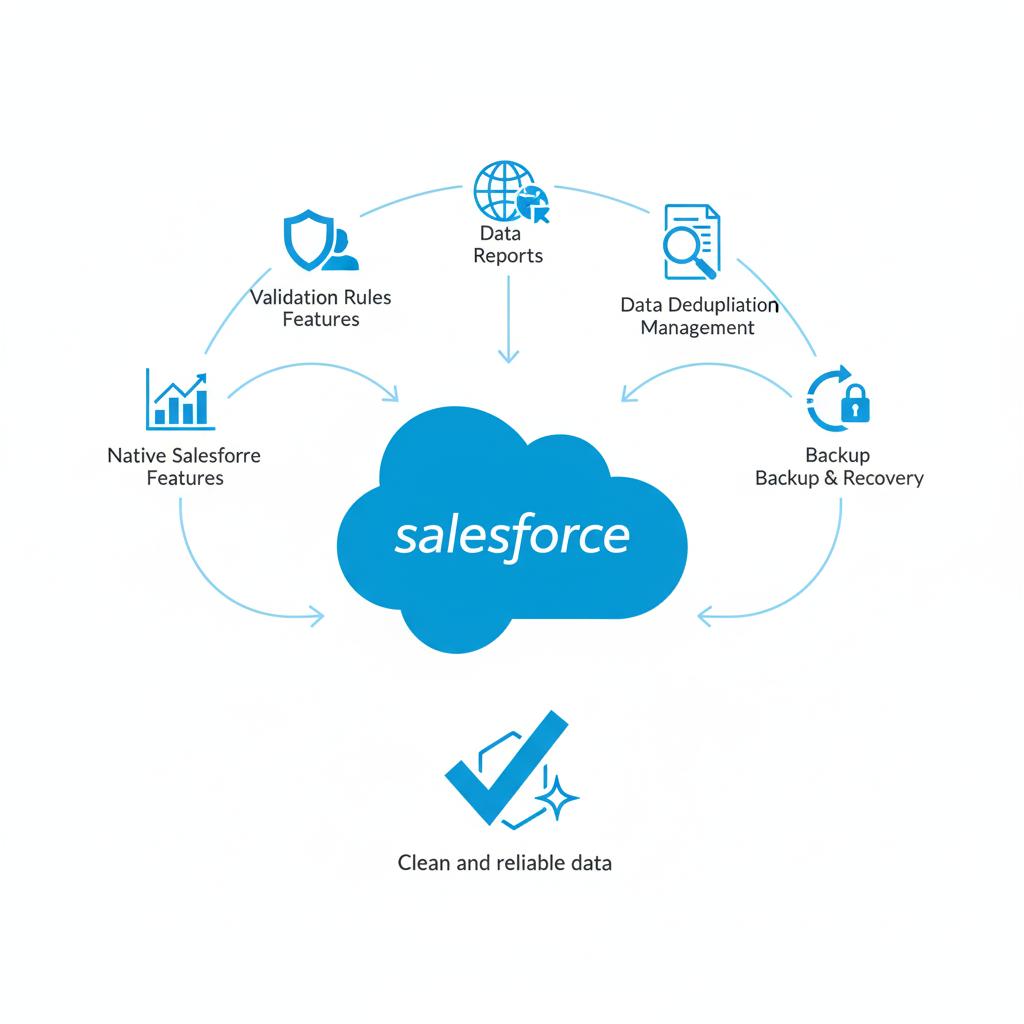Data Quality in Salesforce: Tips, Tools, and Frameworks
In the world of CRM, nothing is more valuable than data.
It’s the foundation of every sales forecast, customer interaction, and executive decision. Poor data quality is one of the biggest challenges in keeping a Salesforce org healthy.
Duplicates, missing fields, inconsistent formatting—these issues may seem small, but they snowball into wasted time, skewed reports, and even lost revenue.
In fact, research shows that bad data costs businesses millions every year through inefficiencies and missed opportunities.
Tips & Tricks for Improving Data Quality
The smartest approach is to stop problems before they start. Think of it like regular maintenance—much easier than fixing a major breakdown later. Here are some practical ways to keep your data in shape:
1. Define Standards Early
Decide on naming conventions and formats (e.g., “United States” instead of “USA” or “U.S.”) and document them in your governance policy. Consistency makes reports easier to trust and prevents confusion down the road.
2. Use Validation Rules
A simple validation rule can block incorrect or incomplete data at the source—for example, requiring an email to include “@” or ensuring a close date isn’t set in the past. Catching errors at entry saves hours of cleanup later.
3. Standardize with Picklists
Free-text fields may seem flexible, but they quickly create inconsistencies (“Tech,” “Technology,” “IT”). Picklists enforce uniform entries, making reporting and segmentation far more accurate.
4. Run Regular Audits
Set up monthly or quarterly reviews to spot gaps or inconsistencies. Dashboards highlighting missing phone numbers, duplicate accounts, or unassigned leads can give you a quick “data health check” at a glance.
5. Invest in User Training
Your users are the front line of data entry. Train your teams on why data quality matters, and show them how clean data leads to smoother processes, more accurate reports, and better customer experiences.
6. Automate Where Possible
Use Flows, Process Builder, or deduplication tools to automate repetitive checks and updates. The less manual effort required, the lower the chance of human error creeping in.
Tools That Help Keep Salesforce Data Clean
Salesforce gives you a solid foundation, but keeping data clean often requires a mix of native features and third-party apps. The good news is you don’t need to reinvent the wheel—plenty of tools already exist to make this easier.
Native Salesforce Features
-
Duplicate Management
Matching and duplicate rules help stop duplicate records from slipping in when users create new leads, contacts, or accounts.
-
Validation Rules & Flows
Automate checks and enforce standards at the point of entry. They act like guardrails for your data.
-
Reports & Dashboards
Create a “Data Health Dashboard” to quickly see where information is missing or inaccurate. For example, accounts without owners or leads missing phone numbers.
-
Einstein Data Detect
An AI-driven feature that helps flag sensitive data or unusual patterns you might not catch manually.
Third-Party Solutions
-
DemandTools
Ideal for mass updates, deduplication, and advanced cleanup.
-
Cloudingo
Automates deduplication and standardization at scale, especially useful for larger orgs.
-
Validity
A comprehensive suite that covers data quality, validation, and monitoring.
-
RingLead
Focuses on enrichment, standardization, and deduplication across large datasets.
-
OwnBackup
A safety net for your data—great for ensuring nothing is lost during cleanup projects.
A Simple Framework: DATA
Keeping Salesforce data clean isn’t a one-time task—it’s an ongoing cycle. One practical way to structure your approach is the DATA framework:
-
Define
Set clear rules, standards, and governance policies. Decide what “good data” looks like for your org and write it down.
-
Automate
Use validation rules, Flows, and deduplication tools to enforce your standards automatically. The less you rely on manual checks, the better.
-
Train
Educate users so they understand why clean data matters and how they contribute. When people see that accurate data helps them sell more, they’ll get on board.
-
Audit
Review data regularly. Use reports, dashboards, and scheduled cleanups to spot errors before they grow out of control.
Final Thoughts
Data quality in Salesforce is the result of a combination of good processes, the right tools, and a culture that values accuracy. Salesforce provides the platform, but it’s up to your team to keep it healthy.
-
Good data
leads to reliable reports.
-
Reliable reports
lead to better decisions.
-
Better decisions
drive business growth.
Define a few standards, roll out a validation rule, or build a simple “Data Health” dashboard. Then, build momentum by adding automation and bringing in the right tools. Over time, these small steps add up to a Salesforce org that leadership can trust and teams actually enjoy working with. When it’s clean, complete, and consistent, your Salesforce org becomes more than just a CRM. It becomes the growth engine of your business.



